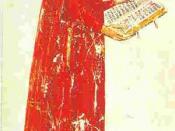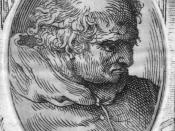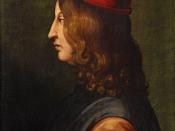The two principal components of Renaissance style are the following: a revival of the classical forms originally developed by the ancient Greeks and Romans, and an intensified concern in humanism and assertion of the importance of the individual. The Renaissance period in art history corresponds to the beginning of the great Western age of discovery and exploration when a general desire developed to examine all aspects of nature and the world. During the this time, artists were no longer regarded as mere artisans as they had been in the medieval past. For the first time they emerged as independent personalities, comparable to poets and writers. They sought new solutions to formal and visual problems, and many of them were also devoted to scientific experimentation.
Among the general characteristics of Baroque art is a sense of movement, energy, and tension. Strong contrasts of light and shadow enhance the dramatic effects of many paintings and sculptures.
In music, the Baroque era is the era of style-consciousness. In all phases of life, a new interest in space prevailed; art was no exception. Scientists and artists alike were concerned with motion and space, but the Baroque artists added the concept of time, dramatic use of light, and a passionate theatricality to their list of interests. The word Baroque itself means "irregularly shaped pearl" in Portuguese, and in this context it best describes the various style that are brought together under the Baroque heading.
Masaccio had a dramatic effect on the course of art during the Renaissance. He made use of both linear and aerial perspective in his frescoes depicting episodes in the life of Saint Peter for the Brancacci Chapel in Florence's Church of Santa Maria del Carmine. In the most famous of these scenes, the Tribute Money, Masaccio invested the figures of Christ...


